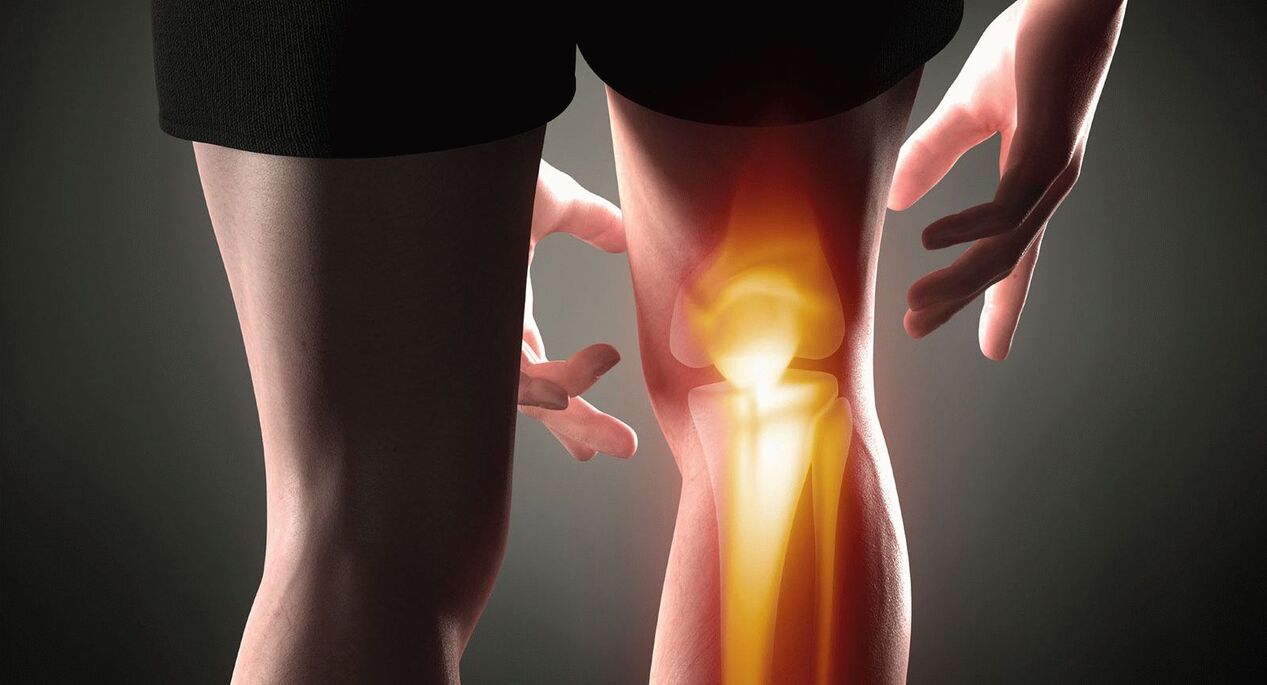
About disease
Causes of the emergence and development of arthropathy
- Get used to moving a little bit,
- Standing still for long periods of time (common in some occupations),
- increased physical activity (certain sports, professional sports),
- age,
- unhealthy diet
- overweight,
- Bad habits (drinking, smoking),
- Endocrine and reproductive system disorders (thyroid disease, sex hormone deficiency),
- Metabolic diseases (diabetes, obesity, atherosclerosis),
- Blood flow impairment (venous insufficiency),
- genetics.
Classification
development stage
- The first stage: discomfort and pain when walking. There were no radiological changes.
- Stage 2: Slight dull pain when walking for a long time, and occasional crunching when bending the limbs. X-ray: barely noticeable narrowing of the joint space, suspicious small osteophytes (growth along the edges of the joint).
- Stage 3: Pain and stiffness increase in the morning. The pain worsens when moving. X-ray examination: The joint space is slightly narrowed and osteophytes are rare.
- Stage 4: Muscle and bone pain that occurs at any time of the day. Swelling may occur and pain may increase. X-ray examination: moderate narrowing of the joint space, obvious osteophytes, changes in the bone surface, and compaction of the bone tissue under the cartilage tissue (subchondral sclerosis).
- The fifth stage: soreness, persistent dull pain, intensified with activity, strong "crunching" sound during activity, joint deformation, and muscle atrophy. X-ray examination: sharp narrowing of joint space, subchondral sclerosis, rough osteophytes, and obvious surface deformation.
Symptoms of Arthropathy
diagnosis
treat
- Arthroscopy
- endoprosthesis
Benefits of visiting a professional clinic
- Qualifications of Experts. Experienced and competent doctors are the highest category of specialists and candidates for medical science. They pay attention to the latest progress in the treatment of joint diseases, regularly exchange experiences with domestic and foreign colleagues, and carry out scientific activities.
- Excellent clinical and laboratory facilities. Modern clinics are equipped with the most modern, effective and safe equipment for successful diagnosis, treatment and implementation of preventive measures. The Clinical Diagnostic Laboratory allows you to perform laboratory tests quickly.
- Fast and effective diagnosis. The excellent equipment of the clinic allows us to carry out a wide range of diagnostic methods: carrying out MRI, CT, radiography and other informative studies allow us to make diagnoses and obtain detailed data on the condition of the joints, in particular, and the body in general.
- A sophisticated approach. In modern clinics, the practice of consultation between doctors from different specialties is common to achieve optimal treatment results.
- Effective treatment. A comprehensive, comprehensive approach to treatment and prevention includes a host of cutting-edge methods.
- Personal approach. Treatment plans are developed taking into account the client's gender and age, as well as other characteristics.
Prevent joint disease
- Follow your doctor's advice,
- Control your weight (each additional kilogram increases your risk of worsening),
- Eliminate or minimize strenuous physical activity,
- Perform regular physical therapy exercises,
- Avoid injuries: use special elements for protection (knee pads, protective clothing, etc. ) and gradually increase the load,
- Use corrective devices and treatments (tape, orthotics) as recommended,
- Get regular checkups, prevention classes and monitor for disease conditions.






















